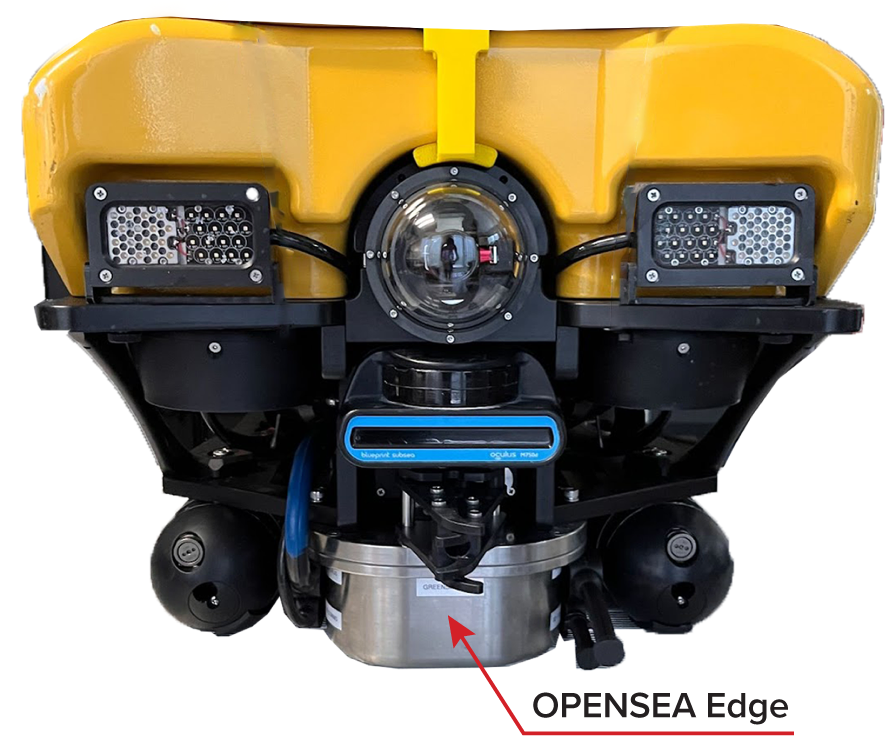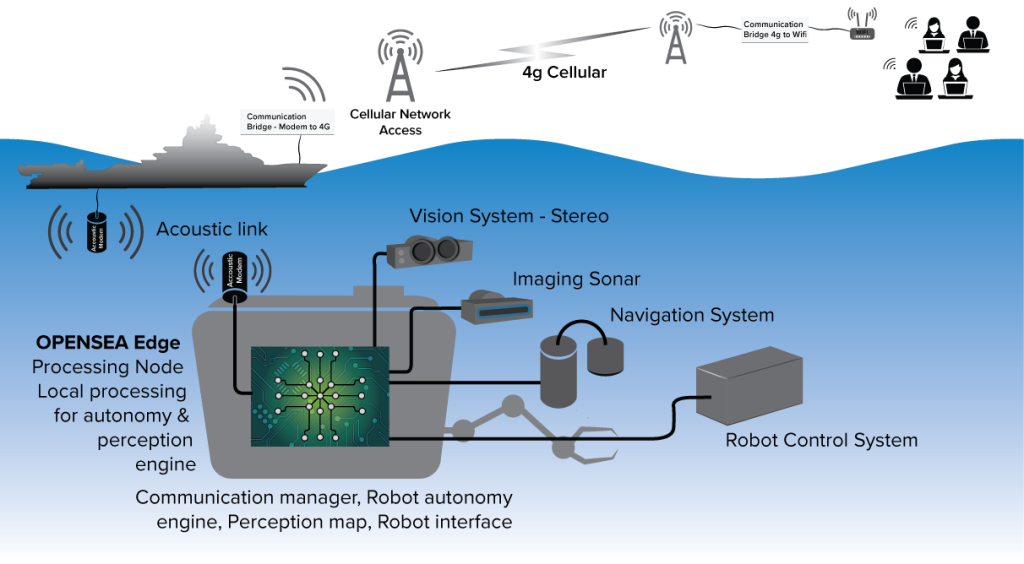OPENSEA Edge
Bringing True Autonomy and Edge Computing to the Seafloor
Overview
OPENSEA Edge is a hardware and software technology framework that provides the computing resources needed to power perception systems and manipulators; it enables advanced autonomous behaviors, thus allowing for trusted human-on-the-loop autonomy and tetherless command and control over any subsea marine robotic platform.

How it Works
The Brains of OPENSEA EDGE
OPENSEA Edge combines the power of OPENSEA with an edge computing package to provide an easy solution for system integrators or vehicle developers moving toward full subsea and untethered autonomy. OPENSEA Edge presents the tried-and-true navigation, vehicle control, and autonomy solutions of OPENSEA with new OPENSEA technologies for objective-based autonomy, perception system integration, and low-bandwidth communications as a platform solution that can port to any vehicle system and support a wide range of applications.

The OPENSEA Edge system is based on two NVIDIA edge processors and a Gigabit Ethernet network architecture, providing subsea connector interfaces, video sensors, sonar sensors, navigation sensors, and acoustic communications.
Edge computing places computational processes—the processing and consumption of data—as near to the source of the data as possible. In the context of ocean robots, it places the software responsible for processing and acting on sensor data onto the robot itself instead of with the operator. For many applications, this is nothing new, but as Remotely Operated Vehicles (ROVs) find relevance in a world that requires persistence, residency, and long-range standoff deployments, ROV architecture must abandon the “topside” architectures in favor of edge processing. ROVs must develop brains.
Hardware Integration

OPENSEA Edge is designed to assist manufacturers and integrators in addressing the autonomy requirements of the next generation of ocean robots easily and cost effectively, while also benefiting from the ever-expanding network of OPENSEA users.
When an ROV is equipped with edge computing, the architecture does not have the burden of providing for high-bandwidth communications between the operator and the robot. Instead of raw video, sonar, sensor data, and command-and-control signals moving up and down a tether, situational awareness and work instructions can move instead. This allows us to consider using low-bandwidth and high-latency links, like acoustic and satellite links, instead of fiber optic and Ethernet tethers.
Of course, with edge processing, our ROVs come to life. Data processing, navigation, and control on the vehicle allow for decision-making on the edge as well. This paves the way for redundancy, failure mitigation, and the platform required to integrate new levels of autonomy. With a modular and vehicle-agnostic autonomy solution—a “brain in a box”—addressing future requirements for residency, uncrewed operations and extended reach are possible for any manufacturer, service provider, or system integrator.
OPENSEA Edge Details
OPENSEA Edge is the most powerful software stack for offshore robotics and can add field-of-the-future to existing fleets.
Features
- Platform agnostic
- Provides open architecture platform OPENSEA
- Provides over-the-horizon command and control
- Provides advance autonomy capabilities
- Room for other commercial off-the-shelf AI and ML engines

